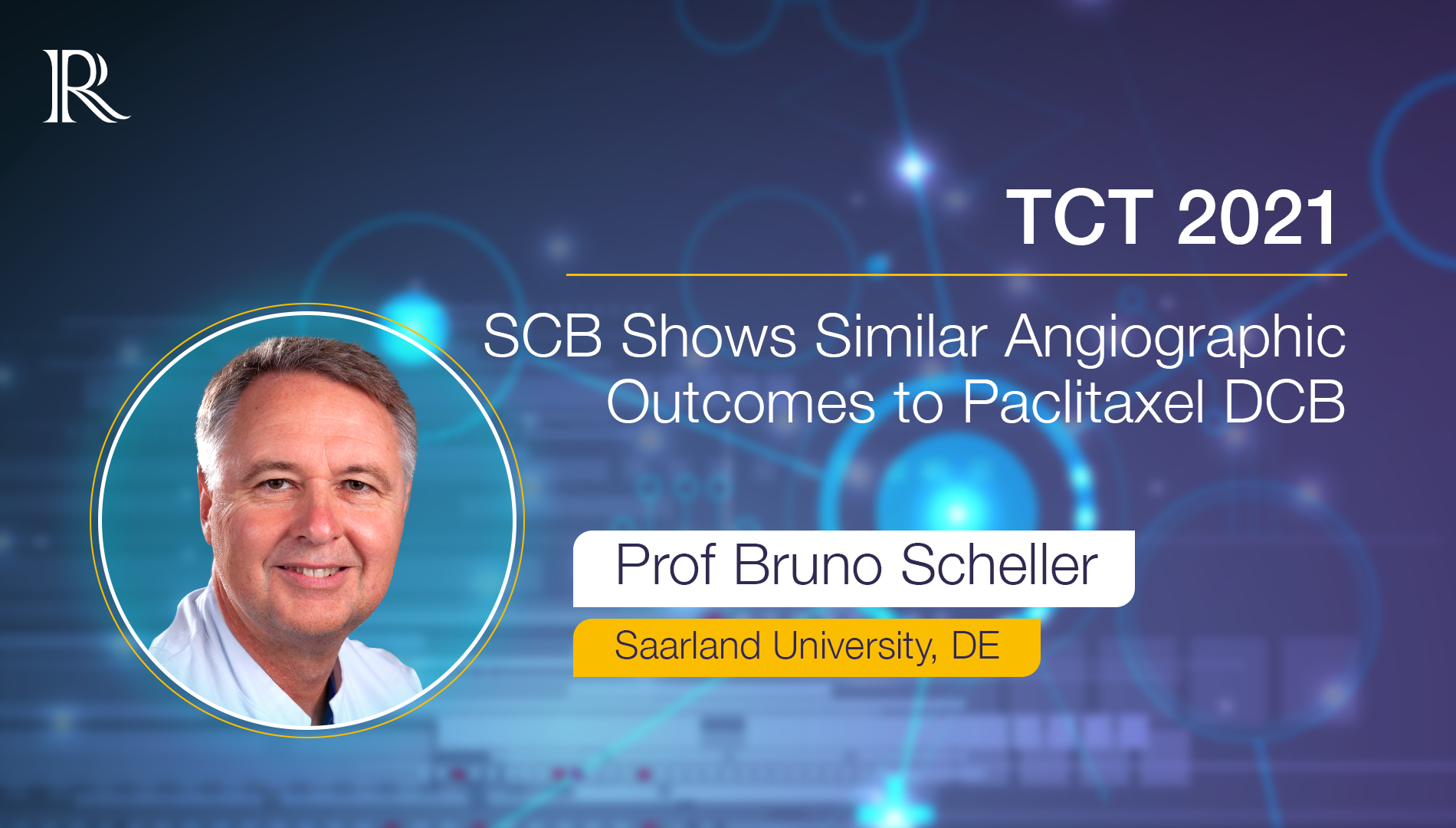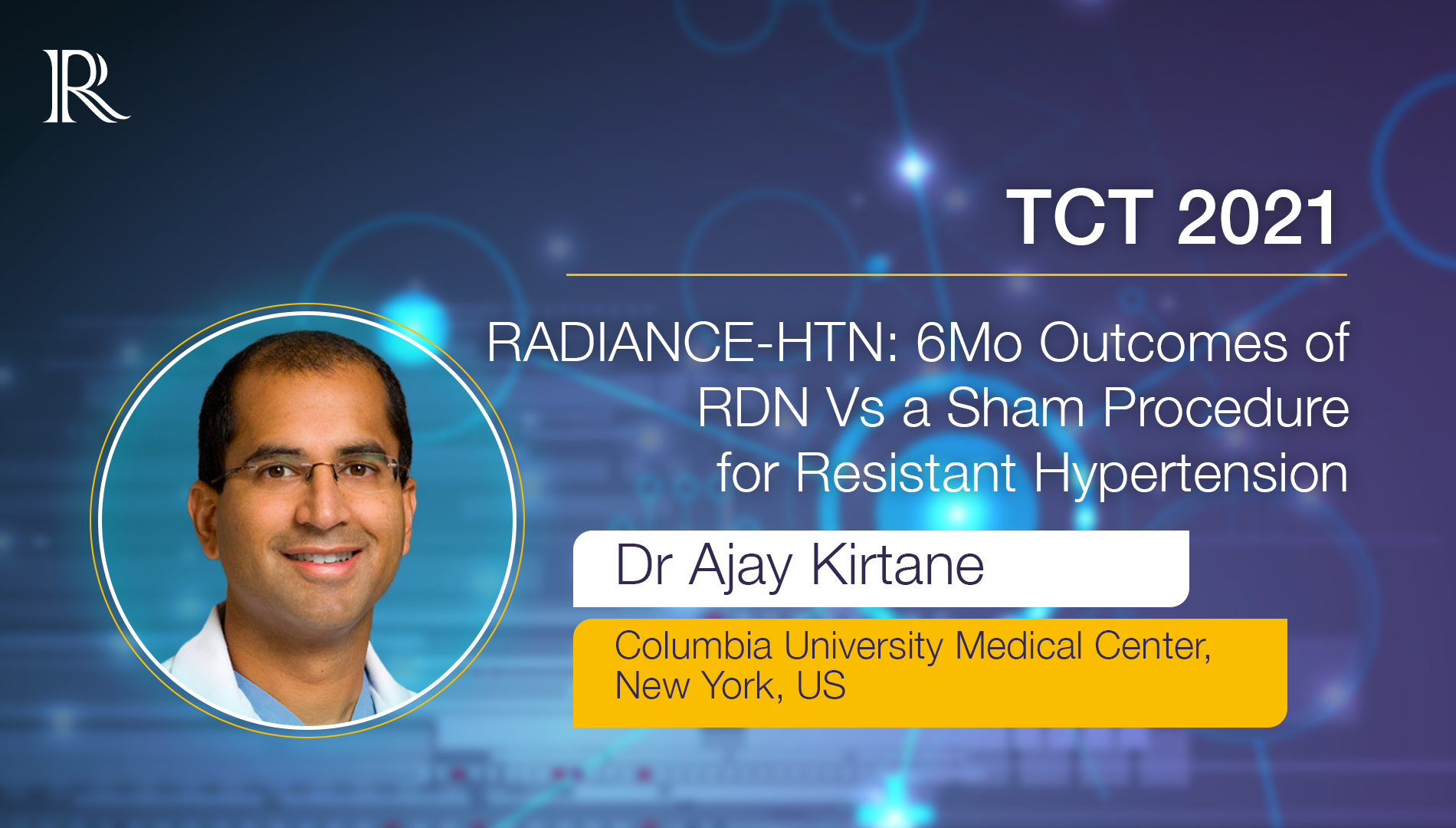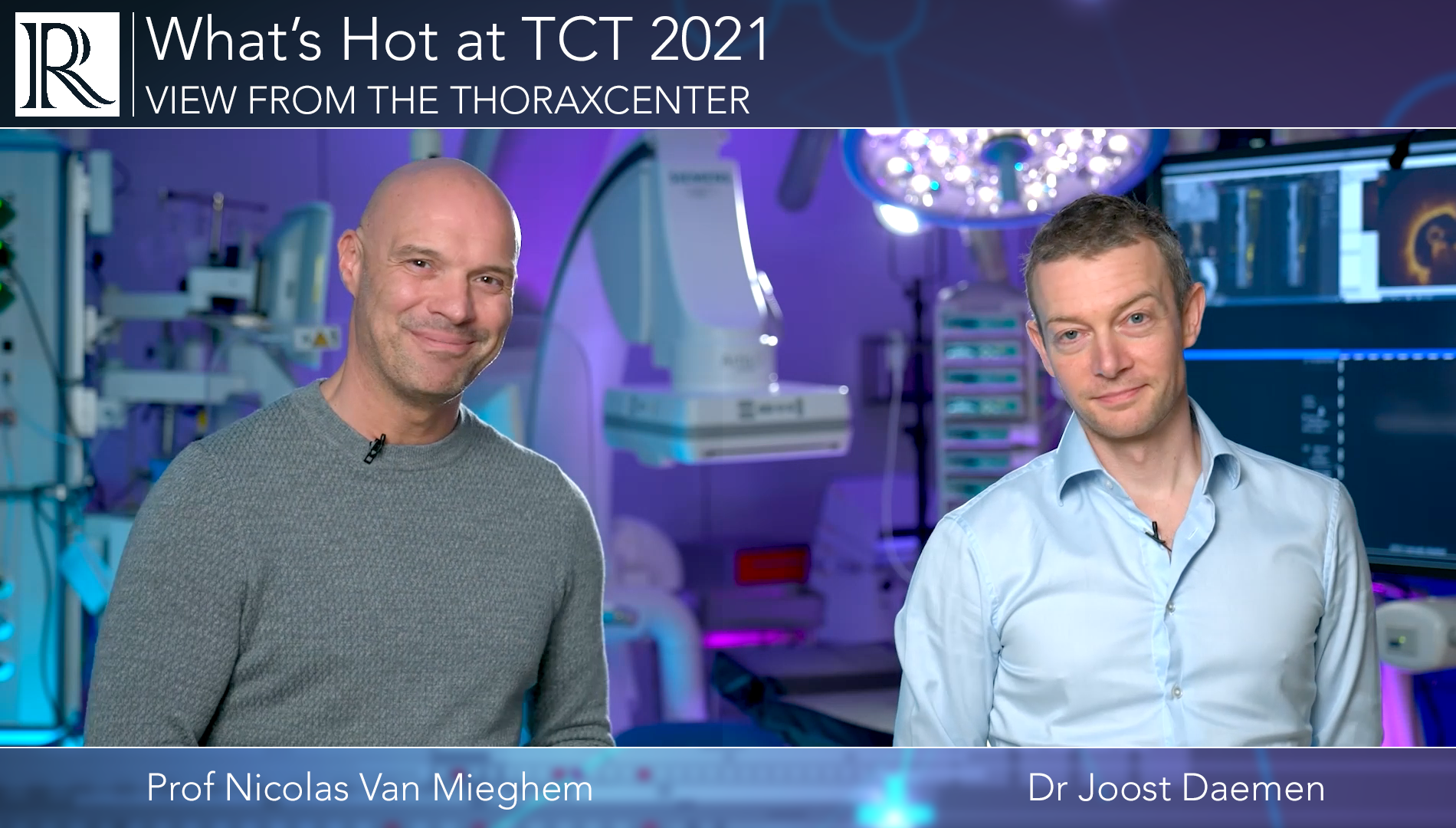TCT 2021: Late-breaking Science Video Collection
Published: 09 November 2021
-
Views:
 2343
2343
-
Likes:
 7
7
-
Views:
 2343
2343
-
Likes:
 7
7
-
 Up Next
Up Next -
 7m 27sPart 2 | Session 5 TRISCEND II: 6Mo Outcomes Show TR Reduction in Majority of Patients
7m 27sPart 2 | Session 5 TRISCEND II: 6Mo Outcomes Show TR Reduction in Majority of Patients -
 8m 8sPart 2 | Session 6 SCB Shows Similar Angiographic Outcomes to Paclitaxel DCB
8m 8sPart 2 | Session 6 SCB Shows Similar Angiographic Outcomes to Paclitaxel DCB -
 3m 37sPart 2 | Session 7 Intrepid TMVR: Results Show Improved NYHA Class at 30 Days
3m 37sPart 2 | Session 7 Intrepid TMVR: Results Show Improved NYHA Class at 30 Days -
 6m 43s
6m 43s -
 4m 44s
4m 44s -
 4m 28sPart 2 | Session 10 BIO-RESORT: 5Y Outcomes
4m 28sPart 2 | Session 10 BIO-RESORT: 5Y Outcomes -
 10m 19sPart 2 | Session 11 OPTIMUM Registry: PCI in Patients at Prohibitive Risk for CABG
10m 19sPart 2 | Session 11 OPTIMUM Registry: PCI in Patients at Prohibitive Risk for CABG
-
 22m 43sPart 1 | Session 1 What's Hot at TCT 2021: View from the Thoraxcenter Nicolas M Van Mieghem, Joost Daemen
22m 43sPart 1 | Session 1 What's Hot at TCT 2021: View from the Thoraxcenter Nicolas M Van Mieghem, Joost Daemen
-
 22m 33sPart 1 | Session 2 View from the Thoraxcenter: TCT 21 Late-breaking Science Wrap Up Nicolas M Van Mieghem, Joost Daemen
22m 33sPart 1 | Session 2 View from the Thoraxcenter: TCT 21 Late-breaking Science Wrap Up Nicolas M Van Mieghem, Joost Daemen
-
 10m 32sPart 2 | Session 1 FAME3: PCI Guided by FFR Didn't Meet Noninferiority for 1Y Outcomes Compared to CABG William Fearon
10m 32sPart 2 | Session 1 FAME3: PCI Guided by FFR Didn't Meet Noninferiority for 1Y Outcomes Compared to CABG William Fearon
-
 4m 40sPart 2 | Session 2 iFR-SWEDEHEART: No Difference in Outcome at 5-yrs of iFR vs FFR Matthias Gotberg
4m 40sPart 2 | Session 2 iFR-SWEDEHEART: No Difference in Outcome at 5-yrs of iFR vs FFR Matthias Gotberg
-
 8m 19sPart 2 | Session 3 SUGAR: Amphilimus-eluting Stents VS Zotarolimus-eluting Stents in Patients With DB Rafael Romaguera
8m 19sPart 2 | Session 3 SUGAR: Amphilimus-eluting Stents VS Zotarolimus-eluting Stents in Patients With DB Rafael Romaguera
Overview
Our regular review series View from the Thoraxcenter hosted by Prof Nicolas Van Mieghem and Dr Joost Daemen (Thoraxcentre, Erasmus MC, Rotterdam, NL) provide a concise and insightful preview of the late-breaking science presented at TCT 2021.
Short, accessible Expert Interviews will be available conducted with select faculty focusing on the results, applicability, and impact on future research.
More from this programme
Part 1
View from the Thoraxcenter: Preview of the Late-Breaking Trials
Part 2
Expert Interviews
Faculty Biographies

Mohamed Abdel-Wahab
Internationally renowned interventional cardiologist specialized in TAVI and complex coronary interventions. Head of the department of structural heart disease at Heart Center Leipzig, the largest European center in terms of number of TAVI procedures. Professor Abdel-Wahab has contributed to over 200 papers in the field of interventional cardiology in high profile peer review journals.
Transcript
Importance of this Study
This study examined two different techniques of large-bore vascular access-site closure during transfemoral TAVI. Procedures requiring large-bore vascular access have increased in the last years in interventional cardiology practice. They include, of course transfemoral TAVI, but also include other procedures, such as mechanical circulatory assist devices and endovascular aortic procedures. And for a large period of time, the options we had were limited. They were mainly based on suture-based techniques. And in the last few years, alternative techniques, depending on, or using plug-based technology, have been introduced. So currently we have a variety of closure techniques based on different device technologies. But randomised comparisons in large randomised studies have been very scarce. And this is why we think the study was necessary and this is why we performed the study.
Study Design and Patient Cohort
So this study, the choice-closure study, included 516 patients under transfemoral TAVI at three German centres. These patients were assessed by our team and they were all deemed suitable for treatment through the transfemoral access route. And they were randomised one-to-one between two closure device techniques. One is what we call the pure plug-based technique, using the so-called MANTA device, and the other group was randomised to what we call a primary suture-based closure technique using a double ProGlide technique complemented by a small plug if necessary. These patients underwent the procedure and then were followed up during the hospital stay and up to 30 days. And the primary endpoint of the study was access-site or access-related, minor and major vascular complications defined according to the VARC-2 definition.
Key Findings
So the key findings was that the primary endpoint of access-site or access-related minor and major vascular complications occurred at a significantly higher rate in the plug-based MANTA group compared to the ProGlide-based, or the suture-based, ProGlide group. So the rate of the primary endpoint was 19.4% in the plug-based group compared to 12.0% in the suture-based group, which was statistically significant at the P value of 0.029. There were some secondary endpoints that we assessed as well. So access-site bleeding events were not significantly different between both groups, but were numerically higher in the plug-based group as well, consistent with the findings we found for the primary endpoint. Device failure was low and not significantly different between both groups, though the mode of treatment of device failure showed some differences. And time to hemostasis, which was also a secondary endpoint, was significantly shorter in the plug-based MANTA group compared to the suture-based ProGlide group.
Impact on Practice
We think these findings are important for several reasons. First, the registry data that we had before this trial, or before the publication of randomised trials, actually showed opposite findings. So the registry data, the observational data, show better outcomes, or less vascular complications, with the plug-based technique. Our findings are showing, actually, the opposite. But they are concordant with the findings of a smaller randomised trial that has recently been published called the MASH trial, performed at two centres in Europe. A study of around 200 patients where the findings were concordant, but they were not statistically significant, probably because of a smaller sample size. So we think the findings of these two randomised trials reflect a real observation. The second important clinical implication of this trial, at least in our practise, is that despite the advantages of this plug-based technique showing a shorter hemostasis time, the more common occurrence of muscular complications has prompted us to use this technique only in selected patients and in bailout situations. So it's not the classical or the default closure technique in our practice anymore. The classical suture-based, double ProGlide technique remains the default technique in our practice because it's associated with less vascular complications as has been documented in this trial. Nevertheless, we think that further investigations would be very important in order to analyse, maybe, how to optimise outcomes with a plug-based device. And again, to assess its usefulness as an important bailout technique in patients where the suture-based technique does not function or even fit.
Next Steps
So the next steps. Of course, this is not the end of the journey. So a lot of other devices are also available and have been introduced into the market. So I think the study highlights the importance of scrutinising and carefully analysing all these closure device technologies and techniques in prospective randomised trials to assess the comparative efficacy. And highlights, again, the limitations of observational data. Another important aspect would be to try and optimise the application technique we have for the available devices. Definitely, the plug-based device is an addition, but defining its exact role, and how to optimise outcomes, and reduce complications, would be also very important to be performed in the near future.





